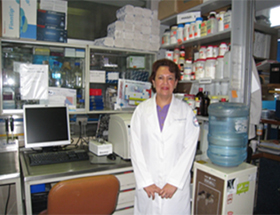
Helicobacter pylori has a chromosomal pathogenicity island (cagPAI), and the presence or absence of this Island places the microorganism into two types of strains: cagPAI+ which is associated to serious infectious processes, and cagPAI- related to mild to moderate infectious events. Simultaneous colonization by cagPAI+ and cagPAI- strains is frequent and these bacteria can interact among themselves. The aim of this project was to analyze the interaction between cagPAI+ and cagPAI- strains of H. pylori in experimental infection, using the Mongolian gerbil as an experimental animal model. We employed J99 (cagPAI+) and 251F (cagPAI-) strains, and obtained 3 derivate strains in successive isolation from experimentally infected gerbils. By RAPD-PCR we found that cagPAI+ and cagPAI- underwent genetic rearrangement during the gerbil-adaptation process. We identified individual isolates from gerbils, and by in situ hybridization we established that both type of strains were able to colonize the same regions of the host's stomach, and induce a mild to moderate inflammatory process. We studied the competence between cagPAI+ and cagPAI- strains by simultaneous and sequential infections. The study shows that in both colonization experiments, the cagPAI- strains were more efficient than cagPAI+ strains in colonizing the infected host by displacing cagPAI+. Copyright 2010 Elsevier Masson SAS. All rights reserved.








